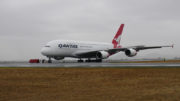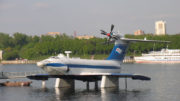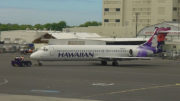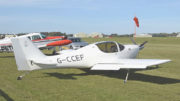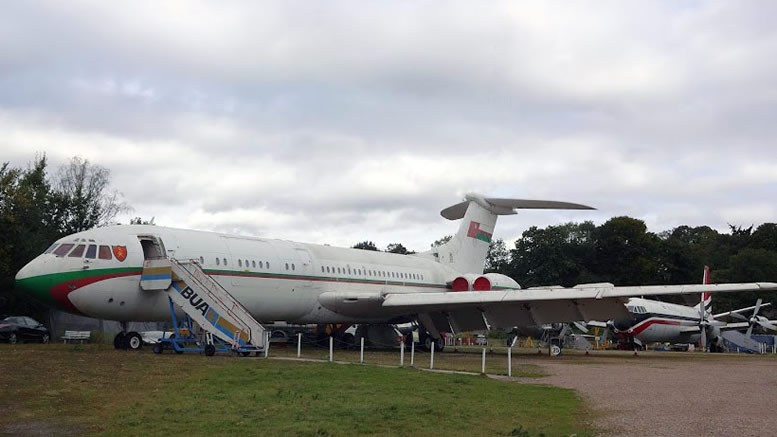 The Vickers VC10 was a mid-size narrow body aeroplane produced by the British based Vickers-Armstrong group from 1962 to 1970. Featuring four jet engines located at the rear of the fuselage below a T tail, it was one of the early quad jet airliners released at a time of the jet age that saw heavy competition from many aircraft manufactures across the globe.
The Vickers VC10 was a mid-size narrow body aeroplane produced by the British based Vickers-Armstrong group from 1962 to 1970. Featuring four jet engines located at the rear of the fuselage below a T tail, it was one of the early quad jet airliners released at a time of the jet age that saw heavy competition from many aircraft manufactures across the globe.
Development on the VC10 started at the request of the British government owned British Overseas Airways Corporation (BOAC). In the late 1950s, BOAC had a large fleet of propeller based aircraft as well as a small fleet of DeHaviland Comet’s that they were wanting to get away from. While BOAC had ordered 15 of the Boeing 707 in 1956, they also needed a smaller plane that could handle the often short and poor quality runways of the British African colonies. The performance of the 707 was also very poor in hot and high places, so it was not all that suitable in Africa and the Middle East or Asia.
After considering some offers from a few British aircraft manufacturers, BOAC placed an order with Vickers who proposed to develop the VC10 based on an earlier design that never made it to production. A unique design at the time, the VC10 featured four Rolls-Royce Conway engines mounted in pods at the rear of the fuselage. It was said that this design was chosen to provide more lift from the wings and a lower sitting aircraft on shorter landing gear. This engine arrangement has only ever since been used in commercial aircraft by the Russian based Ilyushin Il-62. Some people suggested at the time that the Russians copied the VC10 design, but no evidence has been found to suggest this.
Development of the VC10 started to run into issues around the time Vickers was running into financial trouble around 1960 and were forced to merge with a few other companies to form British Aircraft Corporation (BAC). BOAC had 35 orders in of the plane, which was just enough to break even, but Vickers desired to sell more aircraft. Without much interest from other major carriers they offered BOAC a Super 200 variant of the VC10 capable of seating 212 passengers. BOAC was not sold on the idea, but eventually both teams settled on two variants of the VC10, the standard 1100 type capable of seating 151 passengers and the super 1150 type capable of seating 174 passengers. BOAC changed their order to 15 Standard and 35 Super VC10s, but eventually this order was dropped to 12 and 17 respectively. While a few VC10s were also purchased by British United Airways and a few African operators, it was hardly enough to be called a successful production run of aircraft eventually the government stepped in and ordered some military spec versions for the RAF to bring the total of planes up to 54 units when the production run ended in 1970. This also marked the last time the Vickers name would be used on a commercial aircraft now that the company had been absorbed into BAC.
In use, the plane was ahead of its time and quite popular with passengers and crew alike. Relatively quiet inside for the era as well as fast, it also featured highly advanced avionics that even featured an automated landing system to allow for operation in British foggy weather where other aircraft struggled. Despite is popularity, BOAC’s successor British Airways started to phase the VC10 out from 1974 to 1981. Five of these old BOAC ordered planes were sold to Gulf Air as well as one each to Nigeria Air, the UAE and Qatar Governments. Fourteen of BOAC’s the VC10’s ended up going onto the RAF, where they were either used for spares or converted to new military roles. The RAF had much more use out of the VC10 than the airlines, with the last being withdrawn from service in 2013. Five of BOAC’s former Super VC10’s were converted to aerial refueller roles to supplement the RAF ordered fleet of VC10s.
While the VC10 was a much more capable plane than its competitor, the Boeing 707, it was a sales disaster that many place the blame on the desire to tailor the plane too much to BOAC’s needs and not chase international customers. Other British airline manufactures of the time also suffered the same fate with their projects too. Hawker Siddeley’s Trident only sold 117 units compared to 1832 units of the similar Boeing 727. Eventually, Vickers successor BAC merged with Hawker Siddeley and Scottish Aviation to form British Aerospace in 1977.
By: Gary Watts

